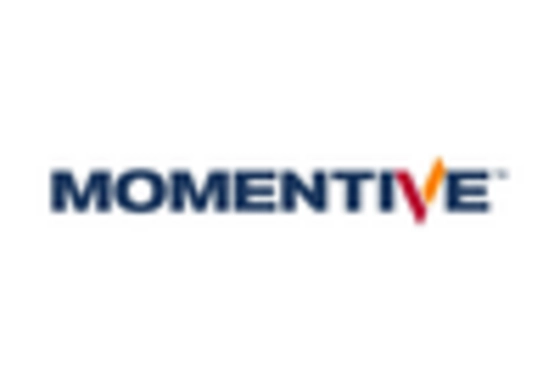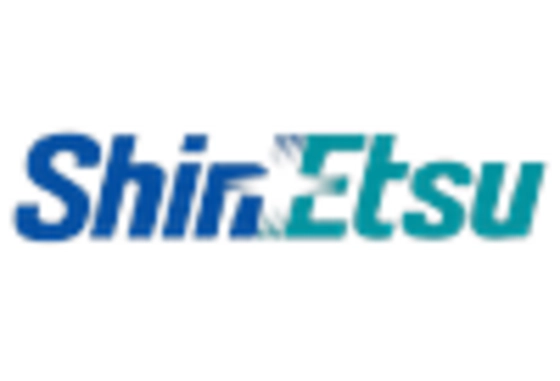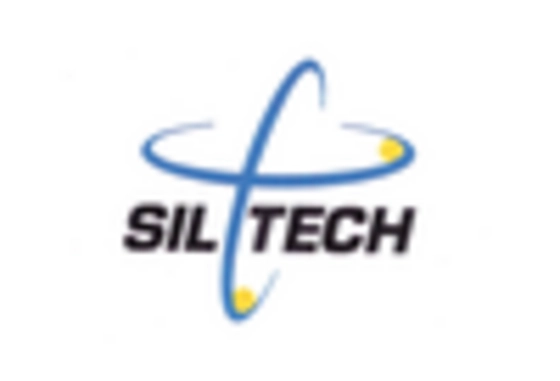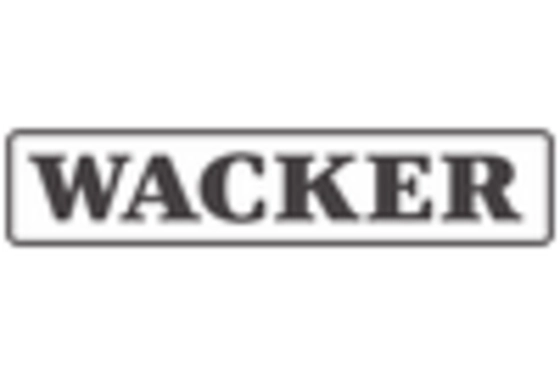The Silicone Surfactant Market is currently characterized by a dynamic competitive landscape, driven by increasing demand across various applications, including personal care, textiles, and construction. Key players such as Wacker Chemie AG (Germany), Dow Inc. (US), and Evonik Industries AG (Germany) are strategically positioned to leverage their technological expertise and extensive product portfolios. Wacker Chemie AG (Germany) focuses on innovation in silicone-based solutions, while Dow Inc. (US) emphasizes sustainability in its product development. Evonik Industries AG (Germany) is enhancing its market presence through strategic partnerships and acquisitions, collectively shaping a competitive environment that prioritizes technological advancement and sustainability.
In terms of business tactics, companies are increasingly localizing manufacturing to reduce lead times and optimize supply chains. The market structure appears moderately fragmented, with several key players exerting considerable influence. This fragmentation allows for niche players to emerge, yet the collective strength of major companies like Momentive Performance Materials Inc. (US) and Shin-Etsu Chemical Co. Ltd. (Japan) ensures that competition remains robust and innovation-driven.
In August 2025, Momentive Performance Materials Inc. (US) announced a significant investment in expanding its production capabilities for silicone surfactants in North America. This strategic move is likely to enhance their operational efficiency and meet the growing demand in the region, positioning the company favorably against competitors. The investment underscores Momentive's commitment to maintaining a competitive edge through localized production and responsiveness to market needs.
In September 2025, Shin-Etsu Chemical Co. Ltd. (Japan) launched a new line of eco-friendly silicone surfactants aimed at the personal care sector. This initiative reflects a growing trend towards sustainability, as consumers increasingly favor environmentally friendly products. By introducing this product line, Shin-Etsu not only addresses market demand but also reinforces its reputation as a leader in sustainable innovation within the silicone surfactant space.
Furthermore, in July 2025, Dow Inc. (US) entered into a strategic partnership with a leading technology firm to integrate AI-driven solutions into its manufacturing processes. This collaboration is expected to enhance operational efficiencies and reduce costs, thereby allowing Dow to offer competitive pricing while maintaining high-quality standards. The integration of AI signifies a broader trend within the industry towards digital transformation, which is becoming essential for maintaining competitiveness.
As of October 2025, the Silicone Surfactant Market is witnessing trends that emphasize digitalization, sustainability, and technological integration. Strategic alliances are increasingly shaping the competitive landscape, enabling companies to pool resources and expertise. Looking ahead, competitive differentiation is likely to evolve from traditional price-based competition to a focus on innovation, technology, and supply chain reliability, as companies strive to meet the demands of a more discerning consumer base.
















Leave a Comment